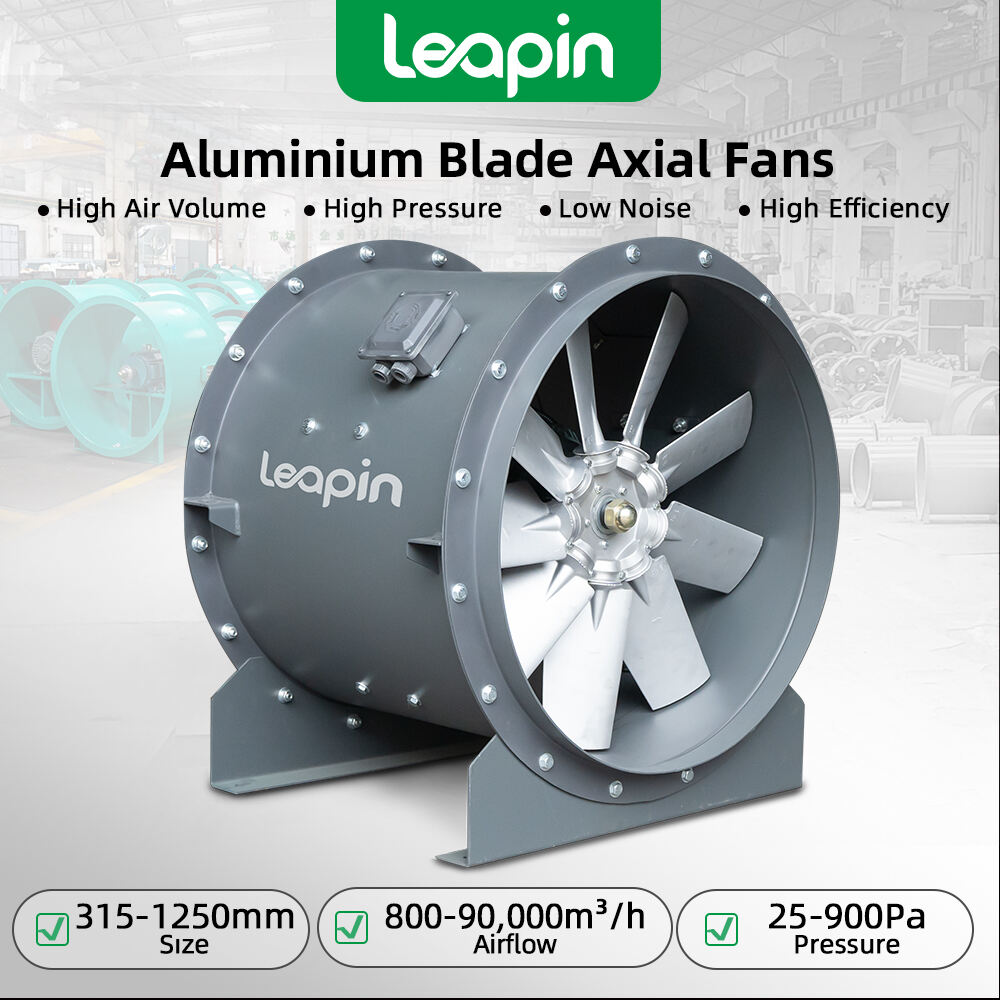Axial Fans for Gyms: Maintaining Optimal Air Quality During Workouts
The Critical Role of Air Quality in Fitness Facilities
The quality of air in fitness facilities is crucial for ensuring the health and well-being of gym-goers. Proper ventilation and the use of effective air filtration systems are essential components in maintaining an environment where athletes can perform at their best without compromising their health.
Health Risks of Poor Gym Ventilation
Poor air quality in gyms can lead to severe health issues, particularly because indoor air can be 2 to 5 times more polluted than outdoor air, as noted by the EPA. The lack of proper ventilation in fitness facilities can exacerbate respiratory issues, trigger allergies, and make individuals more susceptible to illnesses. Common health risks include asthma and chronic obstructive pulmonary disease (COPD), which may be aggravated by exposure to dust, mold, and chemical vapors from cleaning agents. By ensuring effective ventilation, gyms can significantly reduce these risks, thereby fostering a healthier workout environment that minimizes the potential for respiratory distress or other related health problems.
Impact on Equipment Longevity and Performance
The impact of poor air quality extends beyond health concerns to the longevity and performance of gym equipment. Contaminants in the air can lead to the corrosion of gym machinery, resulting in a reduced operational lifespan and increased maintenance costs due to rust and dust accumulation. Conversely, equipment placed in well-ventilated areas tends to experience fewer breakdowns, enhancing its reliability and performance. Studies suggest that maintaining good air quality not only benefits user health but also improves equipment efficiency, leading to increased user satisfaction and positive financial outcomes for gym facilities. Thus, investing in proper ventilation systems is pivotal for protecting both gym assets and revenue.
Industrial-Grade Ventilation Systems for Gyms
Axial Fans vs. Traditional HVAC Solutions
Axial fans provide superior vertical airflow, making them an excellent choice for gyms with high ceilings, compared to traditional HVAC systems that may struggle with space distribution. By moving air more efficiently, axial fans enhance indoor air quality and circulation, crucial for fitness environments. Moreover, these fans are often more energy-efficient, which translates into reduced operational costs due to lower power consumption. According to a recent ASHRAE study, axial fans can improve indoor air quality significantly faster than conventional HVAC systems. This enhancement not only promotes healthier gym environments but also contributes to the financial savings gyms experience through decreased energy bills.
Key Features of High-Efficiency Gym Fans
High-efficiency gym fans integrate advanced energy-saving technologies, capable of cutting down energy usage by 30-50%, as noted in multiple industry assessments. These fans often come with adjustable speed settings, allowing gyms to tailor airflow according to workout intensity and the number of occupants. As durability is crucial in gym settings, these fans are built to withstand demanding conditions with minimal maintenance, ensuring consistent performance. A reliable ventilation system can improve not only air quality but also the longevity and efficiency of gym equipment, leading to increased member satisfaction and potentially higher revenue. By investing in these fans, gyms can benefit from a robust, sustainable solution that optimizes their operational efficiency.
Optimizing Airflow with Advanced Axial Fan Technology
Variable Speed Control for Dynamic Workout Spaces
Variable speed control is a game-changer for gyms, allowing us to adjust airflow based on occupancy and workout intensity to optimize energy use. This technology is crucial in maintaining steady climate conditions, ensuring gym-goers remain comfortable during their workouts, which significantly aids in user retention. In fact, research has shown that gyms equipped with variable speed systems consistently report higher member satisfaction and lower cancellation rates. By aligning fan speed with the dynamic nature of exercise sessions, we can create a more personalized and sustainable gym environment.
Low-Noise Operation in High-Traffic Environments
Advanced axial fans are meticulously engineered to operate with low noise, transforming gym environments into more serene spaces. These fans maintain a noise level of under 60 dB, significantly enhancing the exercise experience. Surveys demonstrate that members in gyms with quieter fan systems report higher levels of satisfaction, as reduced distractions allow for more focused workouts. Furthermore, implementing low-noise axial fans effectively minimizes sound complaints, crucial for sustaining a peaceful workout ambiance. This low-noise technology is essential for creating an optimal gym environment that nurtures user well-being and satisfaction.
By integrating these advanced features, our gym environment can utilize industrial fans to their maximum potential, improving airflow efficiency and user satisfaction.
Premium Axial Fan Solutions for Commercial Gyms
ABF Series Cast Aluminum Axial Fans
The ABF Series fans are crafted from rust-resistant materials, making them perfect for humid gym environments where durability is crucial. These fans ensure longevity and require less maintenance, reducing overall cost and effort for gym management. Comprehensive performance testing guarantees optimized airflow, essential for large commercial spaces where temperature regulation and fresh air are vital. Users have reported significant comfort improvements, contributing to longer workout durations, thus proving the effectiveness of these systems in promoting better exercise experiences.
HTF-T Fire-Rated Smoke Extraction Models
The HTF-T fan models are engineered specifically for safety, featuring fire-rated components essential for gyms with heavy foot traffic. These fans are not only exceptional at circulating air but are indispensable for smoke extraction during emergencies, adhering to strict safety regulations. The dual-purpose functionality of these models reduces the need for multiple systems, conserving both energy and space—a crucial aspect for gyms aiming to maximize efficiency without compromising safety standards.
Aluminum Blade ABF Adjustable Ventilation
Aluminum blades offer a perfect balance between lightweight design and robust durability, outperforming both plastic and steel alternatives in terms of efficiency and performance metrics. The adjustable ventilation feature ensures tailored airflow distribution throughout workout spaces, enhancing user satisfaction through consistently even air distribution. Experts advocate adjustable systems for fine-tuning air circulation based on gym layout and member density, making them indispensable for optimizing gym performance and user comfort.
Maintenance Strategies for Industrial Fitness Fans
Corrosion-Resistant Materials for Humid Environments
Using corrosion-resistant materials in the construction of industrial fans significantly extends the equipment's lifespan, especially in humid environments commonly found in gyms. Coastal gyms or those in high-humidity areas especially benefit from these materials, as they help to prevent rust and other forms of degradation. This, in turn, results in lower repair and replacement costs over time. Statistics highlight that corrosion can lead to 20-30% more maintenance tasks annually, underscoring the importance of selecting materials resistant to rust and wear. Therefore, investing in such corrosion-resistant fans is a strategic maintenance decision for any gym owner looking to minimize operational interruptions and costs.
Energy-Efficient Operation Cost Analysis
In a business such as a gym, reducing operational costs is essential. Implementing energy-efficient industrial fans can lead to substantial cost savings. Many facilities report reductions of up to 40% in their energy bills after adopting these efficient models. Regular maintenance schedules play a crucial role here, ensuring that the fans operate at peak efficiency, thus driving down operational costs even further. Moreover, conducting energy audits provides valuable insights into a gym’s energy consumption patterns, helping to identify areas where improvements can be made. This strategic approach can pivot gyms towards a more sustainable and economically sound operation, all while maintaining optimal air quality and circulation.

 EN
EN
 AR
AR
 FR
FR
 RU
RU
 ES
ES
 TL
TL
 ID
ID
 VI
VI
 TH
TH
 MS
MS
 BN
BN




